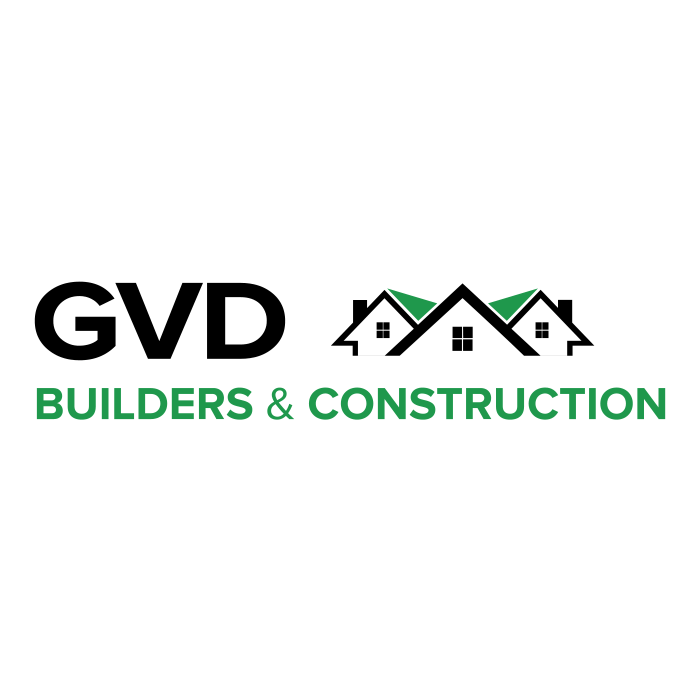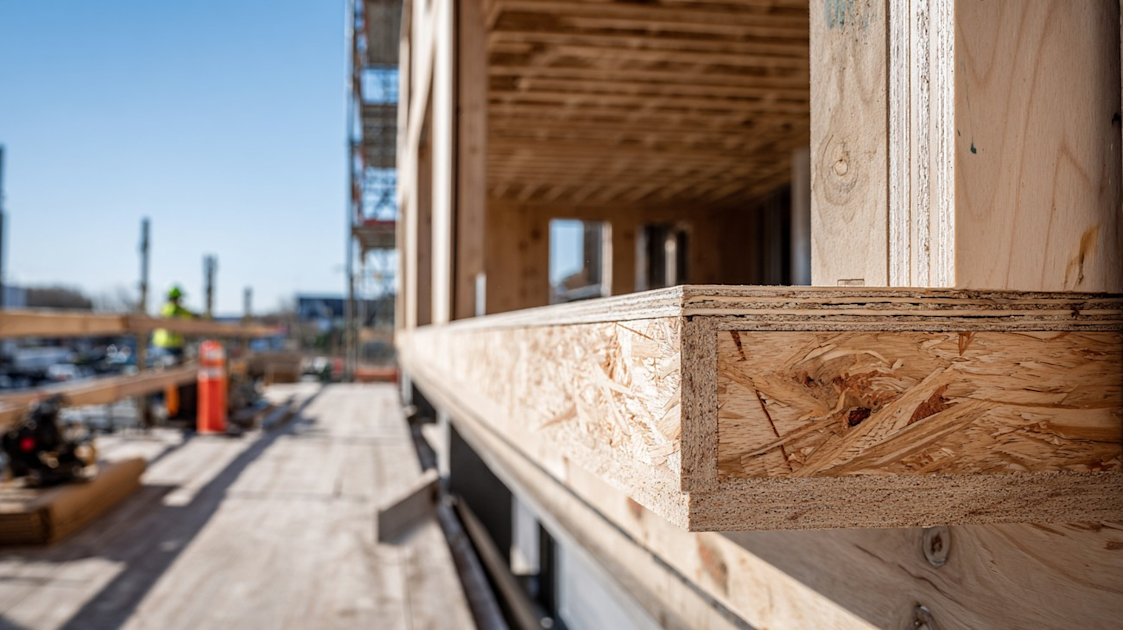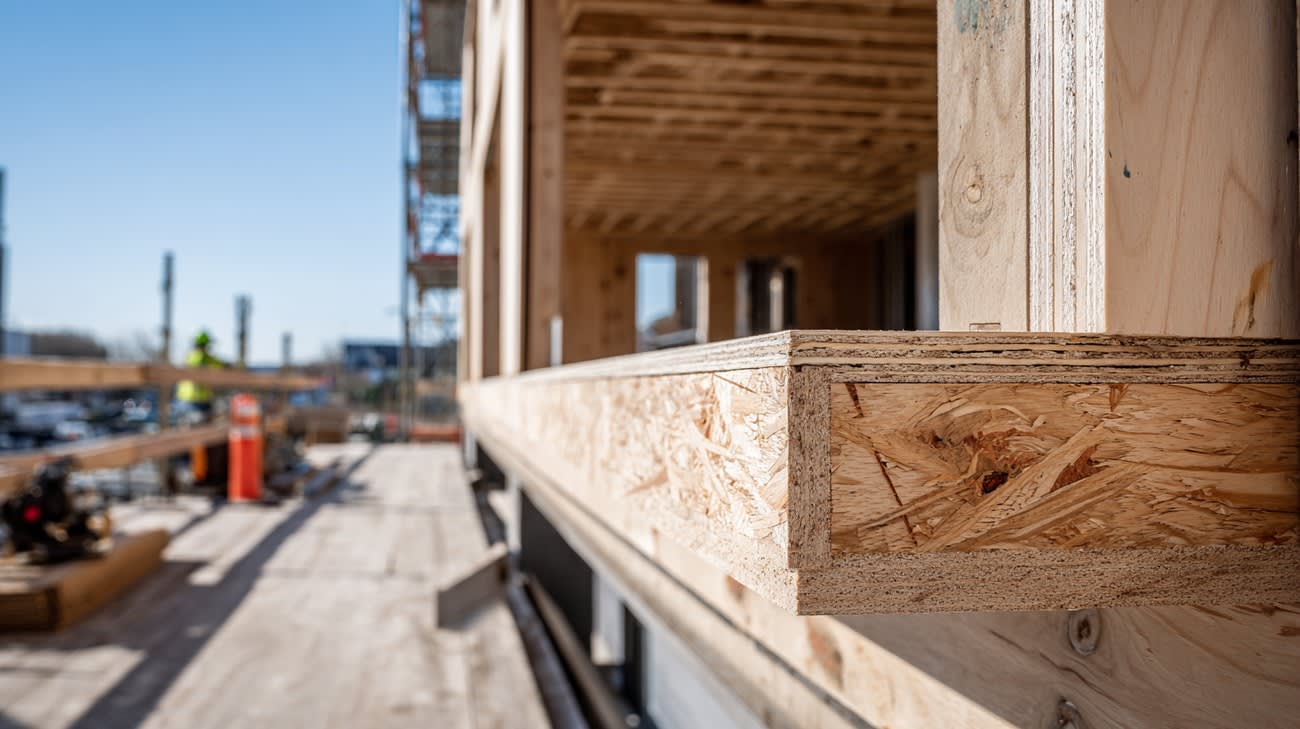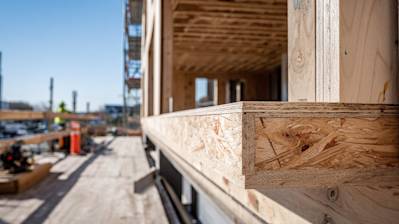In the world of construction and home improvement, exterior sheathing is a critical component that not only contributes to the structural integrity of a building but also enhances its thermal and moisture resistance. This comprehensive guide dives deep into the myriad of aspects surrounding exterior sheathing, providing valuable insights for homeowners, builders, and DIY enthusiasts alike.
What is Exterior Sheathing?
Exterior sheathing refers to the layer of board or panel material that is attached to the exterior wall framing of both residential and commercial buildings. It serves multiple functions, including support, insulation, and protection against the elements.
Importance of Exterior Sheathing
Structural Support: Exterior sheathing plays a crucial role in stabilizing walls, providing a solid base for exterior finishes like siding or stucco. It acts as a brace, keeping walls straight, square, and rigid.
Weather Resistance: One of the key benefits of sheathing is its ability to offer weather resistance. It serves as a barrier against moisture infiltration, which can lead to mold, rot, and structural damage.
Thermal Insulation: By reducing heat transfer and enhancing energy efficiency, sheathing helps maintain indoor comfort and lowers energy bills.
Types of Exterior Sheathing Materials
Selecting the right sheathing material is vital to ensuring the longevity and performance of your building. Below are some common types used in the industry:
Plywood Sheathing
Plywood is a popular choice due to its high strength and durability. It is manufactured from thin layers of wood veneer that are glued together, offering excellent load-bearing capabilities. Plywood is particularly favored for its resistance to shrinkage and warping.
Oriented Strand Board (OSB)
OSB is an engineered wood product formed by compressing layers of wood strands with adhesives. It is economically priced and shares a similar performance to plywood. OSB is prized for its compositional uniformity and is widely utilized across commercial and residential projects alike.
Foam Board Insulation
Foam board, also called rigid foam panels, provides superior insulation performance. Made from polystyrene, polyisocyanurate, or polyurethane, these panels deliver high R-values, ideal for energy-efficient buildings. Foam boards are often used to enhance thermal resistance without adding significant weight.
Structural Insulated Panels (SIPs)
SIPs comprise an insulating foam core sandwiched between two structural facings. These panels combine the structural strength of exterior sheathing with high insulation values. They are incredibly energy-efficient and make for quick installation.
Installation Best Practices
Implementing exterior sheathing correctly is paramount to maximizing its benefits. Below are key tips for a successful installation:
Secure Fastening: Ensure proper nailing patterns and fastener spacing to achieve optimal sheathing attachment and structural support.
Moisture Management: Use house wraps or vapor barriers to augment sheathing's moisture resistance. Properly tape seams and overlaps for additional protection.
Allow for Expansion: Provide space for natural expansion and contraction of sheathing materials to prevent buckling or warping.
Key Considerations
Before embarking on sheathing addition or replacement, consider the following:
Building Codes: Always consult and adhere to local building codes and guidelines which dictate the use of specific sheathing types and installation methods.
Climate and Environment: Select a material that withstands local climate conditions, whether it involves high humidity, severe cold, or extreme winds.
Cost and Budget: Factor in the cost and economic benefits. Some materials, while costlier upfront, may yield long-term savings via energy efficiency.
Benefits of Engineered Wood Sheathing
Engineered wood products like OSB and SIPs showcase several advantages for modern construction:
Uniformity and Reliability: Engineered woods have consistent dimensions and performance, providing dependable structural support across projects.
Sustainability: These products often utilize fast-growing trees and less wood, contributing to sustainable forestry practices.
Versatility: Suitable for diverse applications, engineered wood sheathing adapts beautifully to different architectural designs and finish materials.
Common Issues with Exterior Sheathing
Addressing common challenges with sheathing can preempt costly repairs and maintenance:
Moisture Intrusion: Ensure proper sealing and maintenance of barriers to mitigate mold growth and water damage.
Pest Infestation: Regularly inspect for and treat common pests such as termites that can compromise wood-based sheathing materials.
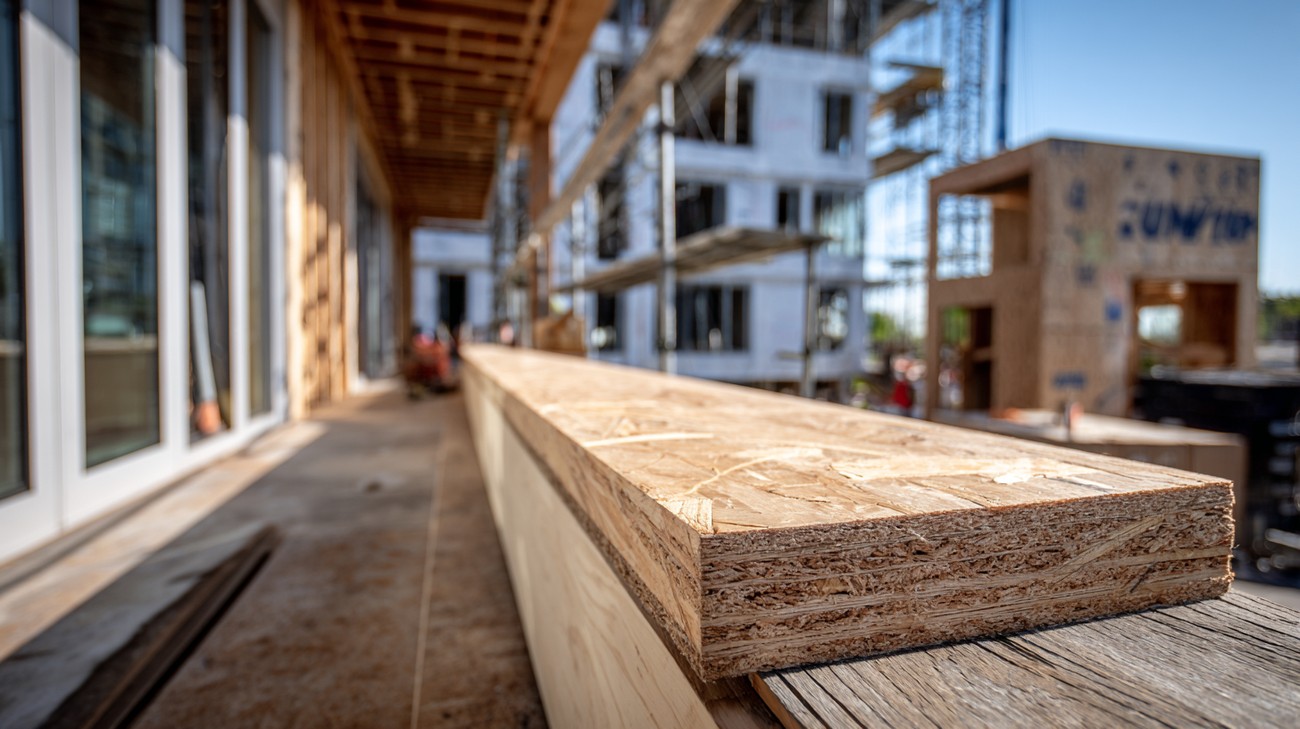
Frequently Asked Questions about Exterior Sheathing
What materials are commonly used for exterior sheathing?
Common materials for exterior sheathing include plywood, oriented strand board (OSB), foam board, and fiberboard. Each material has unique properties, such as water resistance, insulation capabilities, and cost-effectiveness. Plywood and OSB are popular for their strength and load-bearing capabilities. Foam boards provide excellent insulation due to their inherent thermal resistance, making them ideal for energy-efficient building projects.
Is exterior sheathing necessary for all types of construction?
While not mandatory for every single construction type, exterior wall sheathing is highly recommended, especially for wood-frame buildings. In regions that experience extreme weather, sheathing is crucial for reinforcing the building against environmental challenges. Certain building codes may also require the use of exterior sheathing to meet safety standards. However, some alternative construction methods, like those utilizing structural insulated panels (SIPs), might not require additional sheathing.
How does exterior sheathing enhance energy efficiency?
Exterior wall sheathing plays an important role in enhancing a building's energy efficiency. Products like foam board sheathing provide increased insulation, minimizing heat loss during winter and keeping a building cool in summer. This additional thermal barrier reduces reliance on heating and cooling systems, leading to lower energy bills. Furthermore, sheathing helps to cover gaps or seams in walls that might otherwise let air pass through, preserving the internal climate control.
Can exterior sheathing act as a moisture barrier?
Yes, certain types of exterior sheathing can act as a moisture barrier. It is crucial for preventing water infiltration, which can lead to issues like mold, mildew, and rot. To enhance water resistance, many builders use a sheathing wrap in combination with the sheathing itself. While materials like foam board are resistant to water absorption, plywood and OSB may require additional protection depending on the local climate and building requirements.
What is the difference between interior and exterior sheathing?
The primary difference between interior and exterior sheathing lies in their intended function and materials. Exterior wall sheathing is designed to combat environmental factors like wind, rain, and temperature fluctuations. Interior sheathing focuses more on providing structure within the building and supporting interior finishes. Exterior sheathing materials are often more robust or treated to resist moisture and warping, whereas interior sheathing materials might prioritize fire resistance and ease of finishing.
How does exterior sheathing contribute to fire safety?
Certain types of exterior wall sheathing can contribute to a building's fire safety by slowing the spread of flames. Using fire-resistant materials, such as cement board or gypsum-based sheathing, can provide additional fire protection. While traditional materials like plywood or OSB might not offer inherent fire resistance, they can still be treated with flame-retardant coatings to improve their performance in a fire. Always adhere to local fire safety regulations to ensure proper installation and material selection.
How do you properly install exterior sheathing?
Proper installation of exterior wall sheathing involves several critical steps to ensure its effectiveness. Begin by attaching the sheathing panels perpendicular to the wall studs using nails or screws, following spacing guidelines to allow for the natural expansion and contraction of materials. Use adhesive or sealant to cover seams between panels to create a continuous moisture barrier, ensuring overlaps are properly aligned. Always follow the manufacturer’s guidelines and local building codes for specifics on fasteners, sealing, and compatibility with other construction materials.
Can exterior sheathing be replaced or repaired?
Yes, damaged exterior sheathing can be replaced or repaired. The process involves removing the exterior siding to access the sheathing. If only a small area is damaged, it can be cut out and replaced with a new piece. It's vital to address any signs of water damage or mold immediately to prevent further issues. Ensure that any replacement materials are installed correctly, sealing edges, and seams thoroughly to maintain the building envelope's integrity.
Does exterior sheathing affect the choice of siding?
Absolutely, the type of exterior sheathing can impact your choice of siding. Sheathing needs to be compatible with the siding to ensure proper adhesion and functionality. For instance, certain lightweight sidings may require a sturdier sheathing material for support. Additionally, installing some types of siding might necessitate the use of specific sheathing materials with superior moisture or wind resistance properties to amplify durability and lifespan.
Are there eco-friendly options for exterior sheathing?
Indeed, there are eco-friendly options for exterior wall sheathing. Materials like plywood and engineered wood products made from sustainable forestry practices are becoming more popular. Additionally, some foam boards are manufactured with eco-friendlier chemicals and processes. Utilizing recycled materials can also reduce the environmental impact. To ensure eco-friendliness, look for certifications that indicate responsible sourcing and manufacturing practices, such as the Forest Stewardship Council (FSC) certification.

The Upsides and Downsides of Exterior Sheathing
Exterior sheathing: it's not just a buzzword in home construction and renovation circles. Whether you're building your dream home from scratch or giving your current residence a much-needed facelift, selecting the right type of exterior sheathing can make a world of difference in terms of durability, energy efficiency, and style. But, like anything in life, it has its pros and cons. Let's dive in and explore the various aspects of exterior sheathing that you need to consider.
Pros
Enhanced Structural Stability
When it comes to creating a sturdy, resilient structure, exterior sheathing is a key player. It acts as a reinforcement layer for your home, giving it much-needed stability against natural forces. This means your home will stand stronger against strong winds and impacts, providing peace of mind when the weather gets rough.
Improved Insulation
Exterior sheathing can significantly enhance your home's insulation, potentially lowering energy bills. Foam or insulated sheathing materials offer an extra barrier against temperature fluctuations, keeping your home cooler in the summer and warmer in the winter. With heating and cooling costs always on the rise, this is a notable bonus for any homeowner.
Moisture Barrier
Humidity and moisture are perennial enemies of homes everywhere. Sheathing can serve as a moisture barrier, reducing the chances of mold and mildew, which can cause significant structural and health problems over time. With the right exterior sheathing, you're setting the stage for a healthier home environment.
Increased Fire Resistance
Certain types of exterior sheathing, like gypsum or fiber cement, offer increased fire resistance, adding an extra layer of protection to your home. This is particularly enticing for those living in areas prone to wildfires, where having a fire-resistant barrier can make a significant difference in safety.
Soundproofing Qualities
If you're aiming for a quiet, peaceful home environment, the right exterior sheathing can help cut down on noise pollution. Whether it's traffic noise or the sounds of nature, you'll appreciate the added tranquility inside your home thanks to effective soundproofing qualities of some sheathing options.
Eco-Friendly Options
Many modern exterior sheathing materials are designed with environmental friendliness in mind. From recycled materials to sustainable resources, there are plenty of options for the eco-conscious homeowner who wishes to minimize their environmental footprint.
Cons
Cost
One of the primary hurdles homeowners face when considering exterior sheathing is the cost. High-quality sheathing material can be expensive, and when you factor in professional installation, the pricing can add up quickly. While it's an investment in long-term durability and efficiency, the upfront costs can be daunting.
Installation Challenges
While the idea of tackling a home project is exciting, the reality of installing exterior sheathing can be quite challenging. It's a labor-intensive process that often requires specialized tools and knowledge, which means that DIY enthusiasts might find themselves in over their heads. Hiring a professional is usually recommended but adds to the expense.
Potential for Moisture Traps
While exterior sheathing helps to keep moisture out, incorrect installation can lead to moisture becoming trapped within the wall assembly. This can defeat the whole purpose, as trapped moisture can lead to rot and other structural issues. Attention to detail during installation is crucial to avoid these pitfalls.
Weight Concerns
Depending on the type of sheathing chosen, some materials can add significant weight to the structure of a building. This is especially a concern with heavier options like cement board, which can require additional structural support and lead to higher costs in reinforcing your home's framework.
Limited Aesthetic Options
While exterior sheathing provides functional benefits, it's not always the most visually appealing aspect of a home's exterior. It often requires an additional layer of siding or cladding to achieve the desired aesthetic, which can mean extra costs and time.
Potential for Pests
Some natural materials used in exterior sheathing, like wood-based products, can be inviting to pests such as termites. Proper treatment and care are necessary to ensure these types of sheathing are not compromised by insect infestations, adding another layer to maintenance duties.
So, as you can see, exterior sheathing is an element of home construction or renovation that requires a thoughtful approach. It's all about balancing the various pros and cons to choose the best option for your specific needs.

The content provided here is intended for informational purposes only and should not be considered professional advice. We recommend consulting with a qualified specialist before making any decisions related to your project. Pricing, product availability, and specifications are subject to change without notice. Any references to specific brands or products represent our opinions and do not constitute official endorsements or guarantees of performance.
